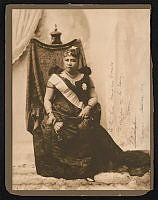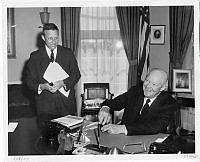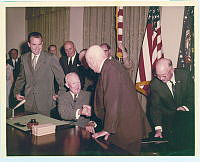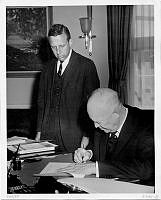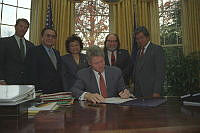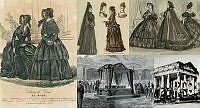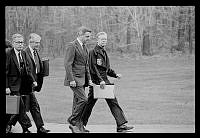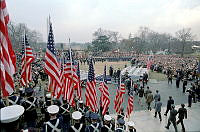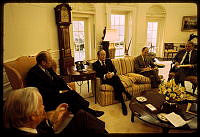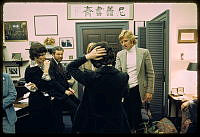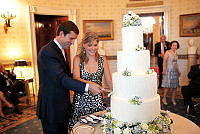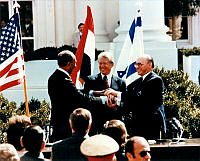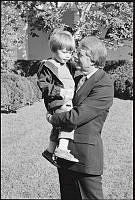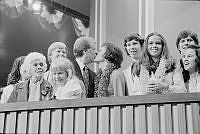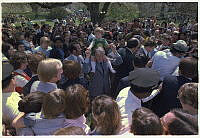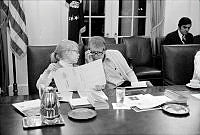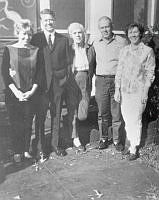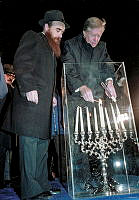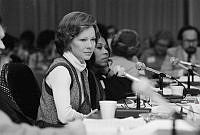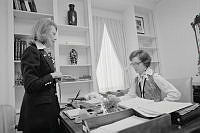The Press at the White House: Early Years Overview
Copyright © White House Historical Association. All rights reserved under international copyright conventions. No part of this article may be reproduced or utilized in any form or by any means, electronic or mechanical, including photocopying, recording, or by any information storage and retrieval system, without permission in writing from the publisher. Requests for reprint permissions should be addressed to books@whha.org
Since the earliest days of the nation, presidents have sought to convey information about themselves and their policies to the public. For the early presidents, newspapers were the vehicle of choice to communicate. In 1800, Washington became the nation’s capital and the National Intelligencer was established, marking the origins of White House coverage.
As cities and communities across the young nation grew, newspapers formed a vital part of civic life and often had a strong partisan voice. A new era began about 1861 as the press changed its focus from serving presidential or party interests to getting a story quickly and attracting an ever-larger numbers of readers. During the latter half of the 19th century, the White House began to take shape as an institution with a professional executive staff. The president conducted the government’s business from second floor offices. Reporters staked out the north entrance, and the business stairs leading up to the executive offices, to interview cabinet members or other officials who might pause and discuss their meetings with the president.
About 1896, the White House became a distinct beat for the press. Presidents began to hold regular meetings with reporters and by 1930 the position of the press secretary was established. Through the decades new forms of media, including radio, television, and the Internet, have evolved to quicken the pace of the news cycle. The president's message doesn’t get far unless it passes through the press filter. A major part of White House operations today is devoted to getting information, ideas, and arguments out to the American people.







